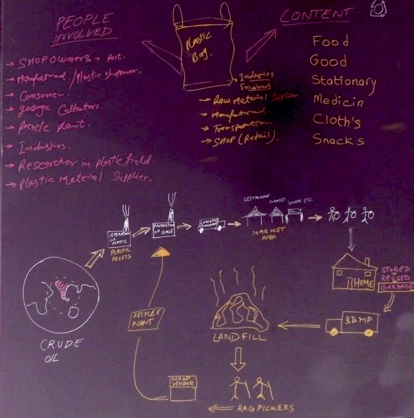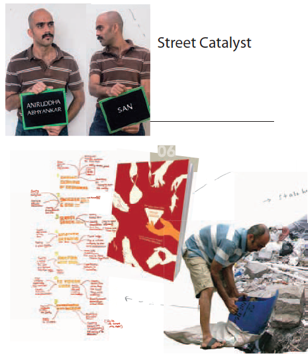“Eventually everything connects - people, ideas, objects. The quality of the connections is the key to quality per se...”-Charles Eames
Systems design is the process of defining the structure, components, modules and interfaces for a system to satisfy specific usage requirements. A system is a group of elements ‘standing together’, and in which each and every element interacts with at least one other via man-made ‘outlines’. Essentially all products, services and systems are interfaces between the functions they perform and the people who use them.
A system is therefore a set of abstract but plausible assumptions that may coincide with real objects (e.g. a seat, bus) or events (e.g. transportation). For example, a seat in a bus is a product designed to ensure a comfortable journey for the passenger. The seat is also a part of a larger system, the bus and the bus is a part of a public transportation service. The Product (seat) the system (the bus) and the Service (transportation) need to be seamlessly integrated, by design in order to give the passenger a pleasant traveling experience. It is the interaction between these outlines with the real objects via a human interface that forms a system.
Guiding principles
In a large cosmic sense everything is connected, we are all held in a network, and there have been several theories and scientific research to verify this. What does this mean to a designer and why should he or she consider this? Systems design helps the designer to discover the underlying structure of a complex fuzzy problem and learn how to manipulate it strategically in order to bring about a desired transformation. Some of the elements in systems design are: Discovering Boundaries, Recognizing Key Elements and Relationships, Synergy, Purpose, Essence, Structure, Information Flow, Behavior, and Scenarios
Type of work
System designers produce a range of work such as:
Systems Analysis & Design:
Map the whole system of waste production, consumption, disposal on the micro and macro level and the stakeholders involved at every level.

Product Analysis:
Analyze a product in terms of its function, form, material and technologies used, and map the eco footprint of the product, right from where the raw materials are sourced from, resources that are needed in its manufacture, transport, sale, use and what happens after it has outlived its use.


System Design for Societal Good:
‘Street Catalyst’ is a civic intervention project that proposed a fresh model to control the visible garbage and litter in central shopping streets of India, where multiple stakeholders with conflicting and competing business interests rarely come together for the upkeep of the area. A complex problem was reduced to one that could be handled by means of working with existing systems and innovating to create possibilities for cleanliness and upkeep of the area.

CREATING NEW OPPORTUNITIES:
This project took up the “walla” (vegetable walla, raddiwalla) system and investigated how people in India communicate and work via cell phones for day-to-day needs. To support the entire product-service system proposal, a “walla” phone has been conceptualized along with a promotional cart to emphasize the marketing strategy. Shortwave gadgets designed to support the idea of having the application work on radio frequency technology were also designed
